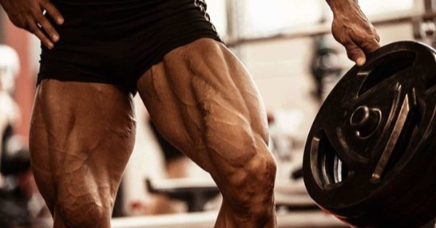The Ultimate Upper Chest Exercise

Even veteran lifters often need help with their upper chests. If you look critically at the results of most chest training, it becomes clear the lower chest is getting a lot more love.
The standard lifts rarely produce the full, upper chest development that sets apart a truly powerful physique.
We’re after 3D, undeniable chest gains that don’t need a tiny stringer tank to get noticed.
And we've got just the lift your chest day's been missing -- with a video walk-through to help you nail it.

To help understand whats going on, indulge a quick review of the pectoral musculature involved: The sternal head dominates the lower portion of the pecs and handles common, arms out, “pushing” movements like the bench press.
It’s the reason why solid lower chest development is widespread, while upper pec progress remains elusive – the lower chest grows best with the strict, pushing-based chest exercises that dominate most chest days.
For a 3D upper chest, the clavicular head of the pecs is what we want to attack.
Running along the collar bones, the under-utilized clavicular region of the muscle is the key to a massive upper chest.

The clavicular head is finicky, and it fires best under a strange set of circumstances – when the hands are pushing forward (like a press), and inward (like a flye), and palms up (like a curl).
All at the same time.
Now we can appreciate why killer upper chest development is generally rare or limited to the genetically gifted. Training the clavicular head optimally requires such a strange blend of stresses that the traditional chest day lifts never quite nail it.
Meet the Supinated-Grip Cable Chest Press: the single best chest exercise to target on the clavicular head of the pec.
Supinated-Grip Cable Chest Press
First, we'll look at a head-on shot of the technique:

Bodybuilders typically work on the upper chest with low-to-high flyes. It’s the right idea, but angular flyes can strain the shoulders.
More importantly: A) the flye movement doesn’t allow heavy enough weights to be used to fully stimulant the muscle fibers in the pecs, and B) it remains difficult to fully engage the clavicular head/upper pecs.
Going to a supinated/palms up grip keeps the shoulder joint in a safer range, and as a bonus, it activates the clavicular head.
Here it is from the side:

It can feel strange at first to press with an underhand grip. After thousands of reps pressing the traditional way, it may seem downright unnatural to flip the hands over and go to town. But it’s the secret to serious upper chest growth.
Take a close look at this "x-ray" view of the muscles in the chest. We’ve marked out the clavicular head with blue. Unlike the middle and lower pecs, the clavicular head is heavily anchored to the upper-most part of the arm (noted in green).

The different, strong tie-in of the upper pec to the upper arm, near the shoulder joint, is why the upper pecs respond so well to a supinated grip (ie, a change in hand, shoulder rotation, and arm position).
Consider the following: Classic bodybuilder Franco Columbo had legendary upper chest development.

Notice how the upper chest pops with a supinated grip (palms up, like in a curl) – the clavicular head of the pecs flexes reflexively, even in lifts that aren’t formal chest exercises.
Using a supinated grip during chest training is the best way to unlock exceptional upper chest gains.
Meanwhile, pressing with cables allows you to use far more weight than is possible with a standard flye, while reaping the benefits of both the pressing and flye movements.
Put it all together with the Supinated Grip Cable Chest Press demonstrated in the video above and absolutely blast your the clavicular muscle fibers.
Final Tips:
A few additional guidelines to get you growing:
- Try 4 sets of 15-20 reps and start light. Technique and the squeeze of the contraction at the end of each rep are more important than using big weight.
- The cables should be set to a low level, grasped using a supinated (underhand) grip and pressed at an upward angle, as shown in the videos provided above.
- Begin from just below the chest with elbows directly at your side -- not flared out as in some other pressing movements.
- At the end of the press, the hands should be in line with your chin.
- Mix this into the middle of your next chest workout and be warned: The pumps are unreal.
- If you really want to take chest day to the next level, check out our pre-workout product, UNTAPPED.
Also in News

14 Essential Tips for Unstoppable Muscle
A handy check list to make this year your strongest, most muscular, leanest year ever. Bookmark this one, it's the 14 Commandments of Fitness.

Upper Chest Won't Grow? It's the Bench Angle.
Your upper chest is flat because your incline bench angle is sabotaging you. One simple adjustment changes everything.

How to Build Legs When Gym's Busy AF
Gym's packed and you can't get a squat rack or a leg press? All you need is 1 heavy dumbbell and you'll never sweat a crowded gym again. Here's the play...



